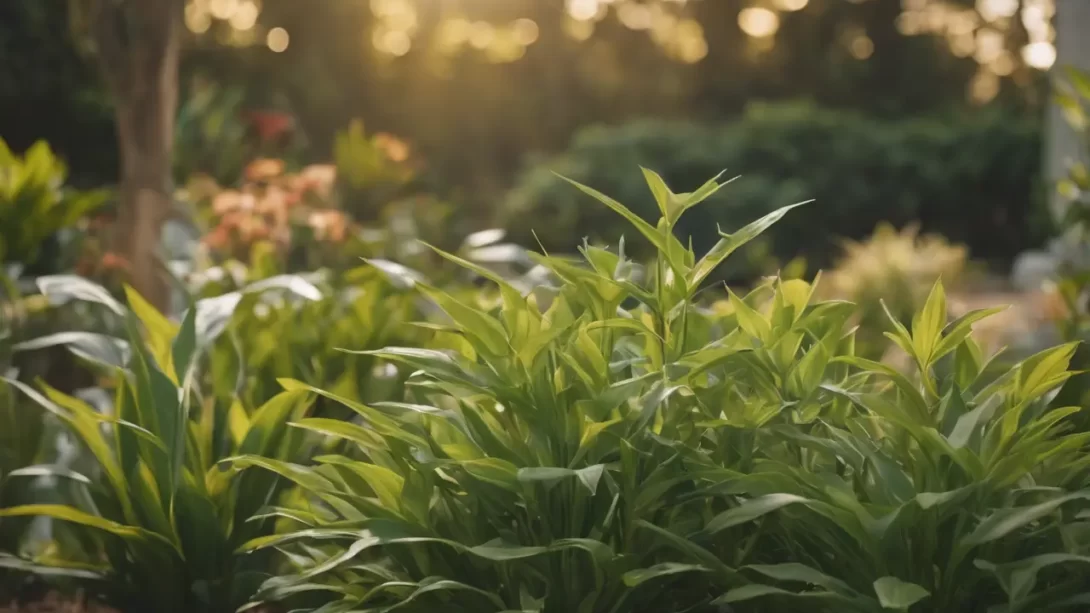Gardening enthusiasts often seek ways to make their plants grow faster and healthier. While there’s no magic trick for instant growth, understanding and optimizing the conditions that influence plant growth can significantly accelerate development. This article explores various methods to encourage quicker growth in plants, tailored to both indoor and outdoor gardening environments.
Plant Basics
At the core of accelerated plant growth are four fundamental factors: sunlight, water, soil, and nutrients. Each plant species has unique requirements for these elements, and striking the right balance is crucial. For example, while some plants thrive in direct sunlight, others prefer shaded environments. Similarly, water and nutrient needs can vary dramatically. Understanding these basics is the first step towards fostering faster growth in your plants.
Optimizing Sunlight Exposure
Sunlight is essential for photosynthesis, the process through which plants convert light into energy. Here are some tips for optimizing light exposure:
- Know Your Plant’s Sunlight Needs: Research your plant’s specific sunlight requirements. Some need full sun, while others do well in partial shade.
- Positioning: Place your plants in areas where they can receive the appropriate amount of sunlight. For outdoor plants, consider the path of the sun across your garden. For indoor plants, window sills facing south usually receive the most light.
- Artificial Lighting: For indoor plants not receiving enough natural light, consider grow lights. LED or fluorescent grow lights can provide the spectrum of light needed for photosynthesis.
Watering Techniques for Faster Growth
Water is crucial, but its overuse or underuse can hinder plant growth:
- Establish a Watering Schedule: Tailor your watering schedule to the needs of each plant. Some plants prefer consistently moist soil, while others need periods of dryness.
- Deep Watering: Instead of frequent shallow watering, opt for a deep watering approach. This method encourages roots to grow deeper, making plants more resilient and healthy.
- Monitoring Soil Moisture: Check the soil moisture regularly. Moisture meters can be a helpful tool, or simply use your finger to feel the soil depth.
Soil and Nutrient Management
The right soil and nutrients are foundational to plant growth. Here’s how to manage them effectively:
- Choosing the Right Soil: Different plants thrive in different types of soil. Research your plant’s preferences—whether it’s loamy, sandy, or clay soil. Good potting soil for container plants should be light and fluffy, promoting good root growth.
- Improving Soil Aeration and Drainage: Plants need oxygen at their roots. Loosen the soil regularly to prevent compaction, and ensure that your pots have adequate drainage holes to prevent waterlogging.
- Enriching Soil with Organic Matter: Incorporate compost or other organic matter into your soil. This improves soil structure, water retention, and nutrient content.
Enhancing Growth with Fertilizers
Fertilizers are crucial in supplying essential nutrients that might be lacking in the soil:
- Types of Fertilizers: Organic fertilizers, such as compost or manure, release nutrients slowly and improve soil health. Synthetic fertilizers provide immediate nutrient availability but can harm beneficial soil microorganisms if overused.
- Selecting the Right Fertilizer: Look for a fertilizer that matches your plant’s specific nutrient needs. The N-P-K ratio (nitrogen, phosphorus, potassium) on fertilizer bags is a key indicator of its composition.
- Application Techniques: Follow the recommended application rates and frequency. Over-fertilizing can damage plants. Using slow-release fertilizers can be a more forgiving option for beginners.
Pruning and Maintenance
Regular pruning and maintenance can significantly influence plant growth:
- Benefits of Pruning: Pruning helps shape the plant, encourages new growth, and removes dead or diseased branches.
- Pruning Techniques: For flowering plants, prune after the blooming cycle. For vegetables, removing some leaves can improve air circulation and light penetration.
- Routine Maintenance: Regularly check for signs of pests or disease. Remove dead leaves and debris to prevent the spread of pests and diseases.
Advanced Techniques for Accelerated Growth
For gardeners looking to take their skills to the next level, these advanced techniques can further enhance plant growth:
- Hydroponics: This soil-less gardening method involves growing plants in a nutrient-rich water solution. Hydroponics can result in faster growth rates as plants receive nutrients more efficiently.
- Aeroponics: Similar to hydroponics, aeroponics suspends plants in air, misting the roots with nutrient solution. This method allows for excellent air circulation around the roots, promoting rapid growth.
- Growth Stimulants or Hormones: Products like rooting hormones or growth stimulants can encourage quicker development, especially in cuttings and seedlings. However, they should be used judiciously following manufacturer instructions.
Common Mistakes to Avoid
To ensure the health of your plants and encourage faster growth, avoid these common pitfalls:
- Over-Fertilizing: More isn’t always better. Excessive fertilization can lead to nutrient burn, damaging your plants.
- Ignoring Signs of Distress: Plants often show early signs of issues such as yellowing leaves, wilting, or spots. Address these issues promptly to prevent stunted growth.
- Forgetting Plant-Specific Needs: Every plant species has unique requirements. Neglecting these, whether it’s light, water, or soil preferences, can hinder growth.
Conclusion
Accelerating plant growth involves a balanced combination of understanding plant needs, providing optimal growing conditions, and regular care. While techniques like hydroponics and the use of fertilizers can significantly boost growth, remember that gardening also requires patience and observation. Experiment with different methods to find what works best for your plants, and enjoy the journey of nurturing and watching them flourish. Remember, the most successful gardeners are those who learn from experience and adapt their practices to their plants’ unique needs. Happy gardening!




